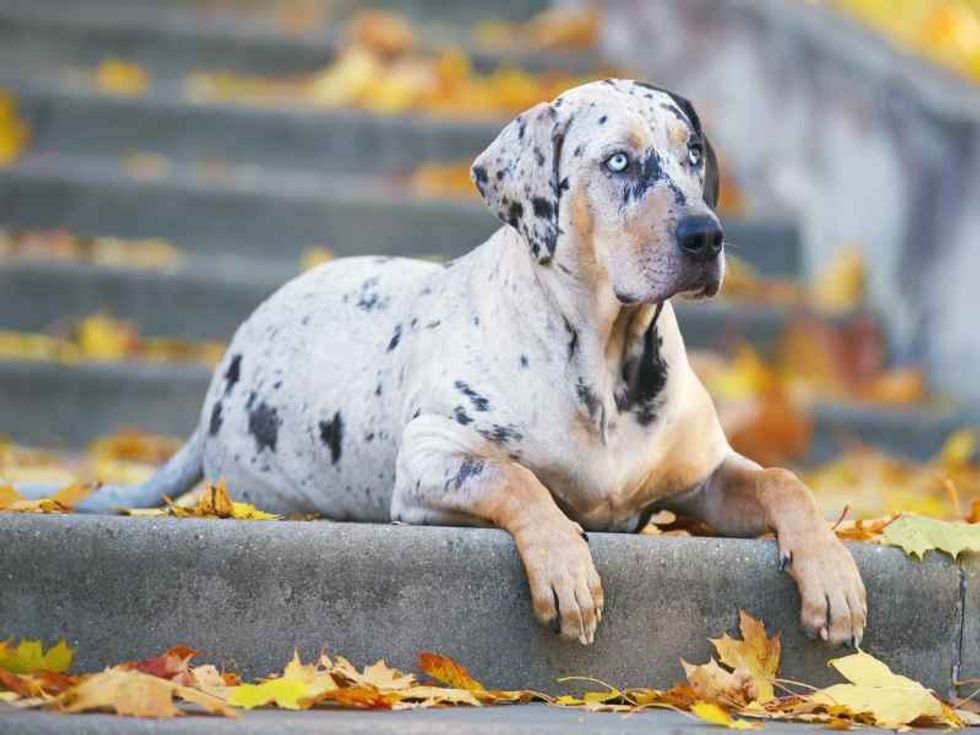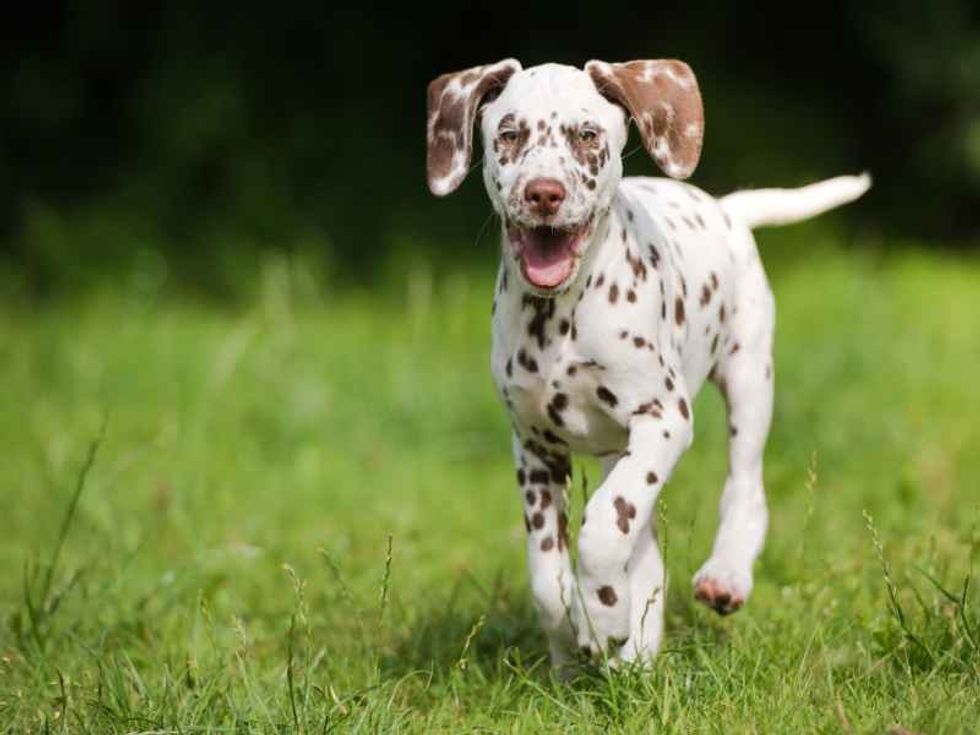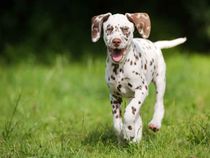Spotted Dog Breeds: Helping You Spot The Perfect Pooch For Your Family

Content
A dog can become a person's friend, child, guardian, exercise buddy, work colleague, hunting partner, and even a playmate.
Scientific studies show that having a pup around can make a person healthier, happier, more active, less lonely, and social. Becoming a pet parent also makes a person responsible and open-hearted.
While it is established that having a furry friend is good for us, many factors go into becoming a pet parent and choosing the best pup for ourselves and our families. Dogs come in various shapes, sizes, colors, and personalities.
While some mutts are content with being couch potatoes, some can not sit still for even a few minutes.
Some are friendly family pets, whereas other types are rowdy hunting dogs. Some dogs are hairless, while some have long silky coats that require regular grooming, and some dogs are easily trained and obedient, while some are more free-spirited breeds.
So, when bringing home a pet, it is essential to keep in mind our living conditions, commitment, the dog's personality traits, compatibility with the breed, and if we can afford to raise our new friend.
In this article, we will get to learn about spotted dog breeds. So, read below to choose your perfect canine companion to bring home.
If you are having fun reading this article so far, check out our other articles: smallest dog breed in the world and sled dog breeds too.
What kind of dog has polka dots?
As soon as we hear the words polka dots, the first thing that comes to mind is the 19th Century fashion trend, and the second is most probably the adorable breed of canine, the Dalmatian.
As beautiful as the Disney heroes are, with their gorgeous white fur filled with dark spots, they aren't the only spotted dog breed out there. Other beautiful furred breeds are Great Dane, Australian shepherd, Australian cattle dog, Bluetick coonhound, Catahoula leopard dog, English setter, English springer spaniel, German shorthaired pointer, Jack Russell terrier, and the Cocker spaniel.
Though not all of them have polka-dotted spots, each of these hounds come in other equally beautiful patterns.
Great Dane is another spotted dog breed that comes with a polka dot-like coat. Though these gentle giants have different coat colors and patterns, the harlequin patterned ones are the most popular.
The other coat types are pure black, blue, fawn with black mask, gray merle, and brindle. This elegant dog breed is known for its friendly and dependable personality and its majestic size.
The Catahoula leopard dog is a breed known for its varied coat colors and patterns and vibrant eyes. The coat colors are often blue merle, red merle, solid colors, sometimes with patches of white or tan, and brindle. These hunting dogs are independent, loyal and watchful.
Australian cattle dog is also called blue heeler or red heeler because of their mottled blue or red coats. This medium-sized herding dog breed is intelligent, alert, pleasant, and hyper. These dogs are born white, then grow blue or red hair with occasional white patches, giving them a mottled coloration.
Bluetick coonhound is a loud, hunting dog breed with a large prey drive. The Bluetick coonhounds get their name because of their glossy navy-like skin, which is the effect of black ticking on white fur. They may also have black patches on the back, ears, and sides.
The Australian shepherd is medium-sized, with divergent coat patterns of blue merle, red merle, solid black, and solid red, sometimes with tan or white markings. These working dogs are super intelligent, exuberant and make for an excellent work companion at a farm.
English cocker spaniel is often described as a merry dog. They come in a large variety of coat colors and patterns, including roan patterning. These energetic and eager-to-please dogs make for excellent family pets.
Border collies, like cocker spaniels, seem to come in an extensive palette of colors and patterns ranging from primary solid colors to merle and brindle patterns. Border collies are working dogs that help in herding. These medium-sized mutts are known to be intelligent, affectionate, and energetic.
The other spotted dogs are corgi, beagle, chihuahua, American bulldog, English bulldog, Staffordshire terrier, etc.
What type of dog is white with brown spots?
The spotted coats on dogs vary in color, pattern, and shape for different breeds. One such combination is the white coat with brown spots or patches.
Again, the color brown comes in various shades like liver, chestnut, dark brown, and tan. One of the most popular dogs with a white coat with brown spots is the Jack Russell terrier.
Jack Russell terriers are highly energetic, friendly, and playful little dogs. These small dogs have smooth or wiry short coats that are, in most cases, white with black, tan, or brown patches.
Though popularly seen in the combination of black and white, Dalmatians also come with white fur dotted with dark brown spots. Dalmatians are intelligent, loving, strong, and protective watchdogs. They have a short and smooth white coat with black or brown spots, which also sheds a lot.
German shorthaired pointer is a hunting dog of medium size. It has a short, smooth coat in black, liver, dark brown, white, and liver-white colors. German shorthaired pointer is a high-energy dog that loves exercise on both land and water, and they are also extremely affectionate.
Brittany spaniel is another dog breed that comes with a white-brown coat combination. Brittany spaniel is a medium-sized, upbeat, outdoorsy breed. These sport dogs have a medium-length wavy double coat that comes in varieties of white-orange and white-brown.
Braque francais is another breed of dog that sometimes has a body of white speckled with brown. Their head is usually always brown. Braque francais is a medium-sized dog with a gentle personality, initially bred for hunting.
Pyrenean Mastiff is another one of the spotted dogs. These gentle giants have a white coat with a mask and patches of different colors, such as brown, black, beige, or gray. This noble, brave, and intelligent breed of dog has a medium-length double coat.
English Setter is a medium-sized dog that has a white, silky, and medium-length double coat with flecks of different colors like brown, black, and orange in different dogs. The beautiful combination and pattern of coat colors in English setters is referred to as Belton.
English setter is sweetly called the gentleman of the dog on account of its sweet temperament.
English springer spaniels are dogs that come in combinations of black and white, liver and white, and even tan mixed in some. Springer spaniel is a medium-sized bird dog that is friendly, alert, and quick to learn.
Other spotted dog breeds that may come with a white coat and brown spots are English pointer, American hairless terrier, and bull Arab.
What are the genetics behind spotted coats in dogs?

Like humans, the variations in dog coats and skin coloring are due to the pigment called melanin. There are two types of melanin, namely eumelanin and phaeomelanin. The presence of eumelanin produces a black color, whereas phaeomelanin produces red. All the different shades of coats seen in dogs are due to these pigments in various dilutions and intensities.
There are thousands of genes present in a pup's genome, but only eight of them are responsible for their coat color. These eight gene loci decide whether the mutt is of a single color or has spots, patches, or patterns.
The gene loci responsible for spotted coat patterns are mainly the M locus, the H locus, and the S locus. M(merle) locus creates irregular shapes and patches of a solid color and its diluted forms on a dog's coat.
An example of a spotted breed with a merle pattern is the Catahoula leopard dog. The H(harlequin) locus is responsible for white dogs with black spots.
The best example of a harlequin pattern is the Harlequin Great Dane. This giant dog has a beautiful white coat filled with black spots.
The H locus sometimes interacts with the merle locus to create different colored spots. The piebald and particolored coats come from the S locus.
One such example of a piebald coat is the Jack Russell terrier. These gene loci, either individually or together in combinations, are responsible for the colors of the dog's coat.
What dog breed develops spotted bellies?
Most dogs with a spotted coat have spots scattered all over their bodies. Some breeds might have a different colored mask, and some have ears or limbs of other colors.
A few breeds even have a white underside. In most spotted dog breeds we have read about so far, the spots splashed across these mutts' backs and sides also dot their bellies. Jack Russell terrier, Dalmatian, and Bulldog are puppy breeds with some of the most adorable spotted bellies.
While spots along a dog's belly are nothing uncommon, it is necessary to watch for any unusual and sudden appearance of spots on our dog's skin. Though most dogs are born plain or white, their coat spots or other patterns are developed within their early years and stay.
These spots caused by natural pigmentation are flush with the rest of the skin. Any additional spots that grow on your pup's belly unexpectedly and are raised or rough to touch must be examined.
Some causes for spots on the bellies could be infections, allergies, parasites, hormonal imbalance.
It is suggested to check with your veterinarian if you see any foreign spots on your dog's skin and notice them itching or licking that spot. It is also advised to regularly groom and inspect your pet to keep them clean and healthy.
Health Problems In Spotted Dog Breeds
Like any other living being, dogs encounter health issues, too, ranging from minor skin infections to cancers. Some health conditions may be more common in certain dog breeds due to their size, coat types, or genes.
For example, big and heavy dogs are more prone to hip dysplasia, while dogs with floppy and furry ears are susceptible to ear infections. Bloating or gastric dilation and volvulus (GDV) are also most commonly seen in dogs of big sizes.
Spotted dogs come from a large variety and types of breeds. Each breed has its physicality and related health benefits and concerns, but some genes associated with spotting in dogs might raise health concerns.
Some piebald and albino pups in breeds like Dalmatian, Great Dane, border collie may suffer from deafness. This occurs due to the absence of melanocytes in the ears. Puppies born from parents with merle patterns have a 25% chance of being born deaf, blind, or with various ocular issues.
Having one merle gene in dogs gives them a beautifully patterned coat. In contrast, double merles in dog genes result in visual and auditory problems, and the pups are mostly born entirely or partially white.
Grooming Spotted Dog Breeds
Spotted dog breeds are, as we have been learning so far, very diverse. There are spotted dogs that are as small as the Chihuahuas to as big as the Great Danes. Each has different coat types, sizes, physical and personality traits. Hence each breed requires a different kind of grooming and in different frequencies.
While most of the spotted dog breeds we have discussed shed their fur moderately, Dalmatians shed more than most dogs. Grooming is one way to reduce shedding by a bit.
Brushing your dog regularly and bathing and grooming them every few weeks will be often enough for most dogs.
Breeds like Australian cattle dog, Great Dane, Chihuahua, and Braque francais need grooming less frequently than the other breeds.
On the other hand, dogs with medium or long coat lengths like English setter, Cocker spaniel, border collie, Brittany spaniel, and Pyrenean mastiff need to be brushed and thoroughly inspected every few days and groomed once in a week or two.
Regardless of your dog's breed, coat color, or pattern, it is always advised to regularly check their skin, fur, teeth, nails, and ears and keep them clean for your pup's healthier life.
The Personality Of Spotted Dog Breeds
Dogs are often called the man's best friend. This is an apt saying, as most dog breeds have such affectionate, friendly, and loyal personalities towards their owners.
Most, if not all, dogs can become excellent companions or family pets with proper training and care. As distinct as they may be, the spotted dog breeds we have discussed so far are no exception to this idea.
The working or hunting dogs sometimes have independent and stubborn personalities and may require stern training from experienced pet owners. Even with their independent personalities, most dogs are super affectionate and loyal. Examples of such breeds are Dalmatians, Catahoula leopard dog, Bluetick coonhound, Great Dane, Border Collie, Pyrenean Mastiff, etc.
Other dog breeds are easily trainable with eager-to-please personalities. Such dogs make for delightful pets for first-time owners. English setter, cocker spaniels, English springer spaniels, and Brittany spaniels are some examples of them.
Are they right for you?
The majority of the spotted dog breeds discussed in this article have high energy levels, so they require either large homes with yards to prance around or regular exercise routines to release this energy.
Despite their large size, couch potatoes like the Great Danes will do as well in smaller homes or apartments as toy dogs like Chihuahuas, but all the other dogs might love a house with a backyard.
Loud barkers like the Bluetick coonhounds and border collies are also not advised for apartment lives.
If you are in search of low-maintenance dogs that do not require much grooming, breeds like Australian cattle dogs, Great Danes, and Braque francais may be best suited. Dogs like Australian shepherds, Brittany spaniels, Dalmatians, and border collies make a perfect companion if you are an adventure lover.
While these are some general suggestions for picking your next pup, it is advised to consult a dog breeder and to evaluate your living conditions, preferences, and your compatibility with the puppy before bringing them home.
Here at Kidadl, we have carefully created lots of interesting family-friendly facts for everyone to enjoy! If you liked our suggestions for spotted dog breeds, then why not take a look at are brussel sprouts good for dogs or dalmatian facts.
We Want Your Photos!
More for You
See All
Master of Business Administration

Deepthi ReddyMaster of Business Administration
With an MBA under her belt, Deepthi has discovered her true calling in content writing. Her writing repertoire is diverse, covering travel, movies, pet care, parenting, animals and birds, and more. Her joy of learning and creating has helped her craft well-written and engaging articles. When she isn't writing, Deepthi enjoys exploring new cultures, trying different foods, and spending quality time with her two children aged 7 and 12.
Bachelor of Arts specializing in English, Bachelor of Education specializing in the Language Arts

Amatullah GulbargawalaBachelor of Arts specializing in English, Bachelor of Education specializing in the Language Arts
Amatullah is a passionate student pursuing a Bachelor of Arts and Bachelor of Education from Ashoka College of Education. With a keen interest in literature, she has excelled in elocution competitions and is an accomplished writer. She has completed courses like "History of English Language and Literature", "Introduction to Western Political Thought and Theory", and "Development of Soft Skills and Personality". In her free time, Amatullah enjoys reading books and writing poetry.
Disclaimer
1) Kidadl is independent and to make our service free to you the reader we are supported by advertising. We hope you love our recommendations for products and services! What we suggest is selected independently by the Kidadl team. If you purchase using the Buy Now button we may earn a small commission. This does not influence our choices. Prices are correct and items are available at the time the article was published but we cannot guarantee that on the time of reading. Please note that Kidadl is a participant in the Amazon Services LLC Associates Program, an affiliate advertising program designed to provide a means for sites to earn advertising fees by advertising and linking to Amazon. We also link to other websites, but are not responsible for their content.
2) At Kidadl, we strive to recommend the very best activities and events. We will always aim to give you accurate information at the date of publication - however, information does change, so it’s important you do your own research, double-check and make the decision that is right for your family. We recognise that not all activities and ideas are appropriate for all children and families or in all circumstances. Our recommended activities are based on age but these are a guide. We recommend that these ideas are used as inspiration, that ideas are undertaken with appropriate adult supervision, and that each adult uses their own discretion and knowledge of their children to consider the safety and suitability. Kidadl cannot accept liability for the execution of these ideas, and parental supervision is advised at all times, as safety is paramount. Anyone using the information provided by Kidadl does so at their own risk and we can not accept liability if things go wrong.
3) Because we are an educational resource, we have quotes and facts about a range of historical and modern figures. We do not endorse the actions of or rhetoric of all the people included in these collections, but we think they are important for growing minds to learn about under the guidance of parents or guardians.







